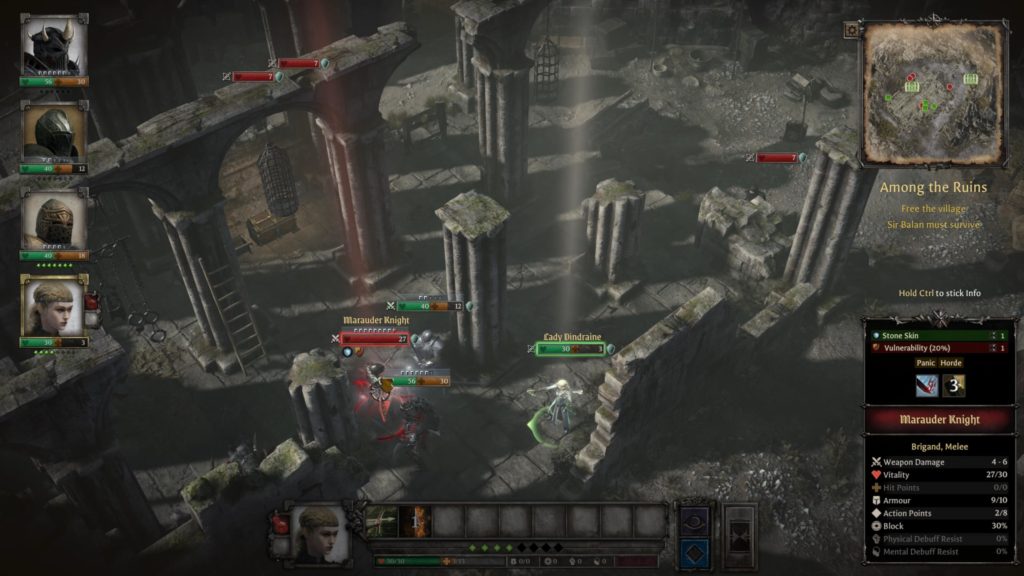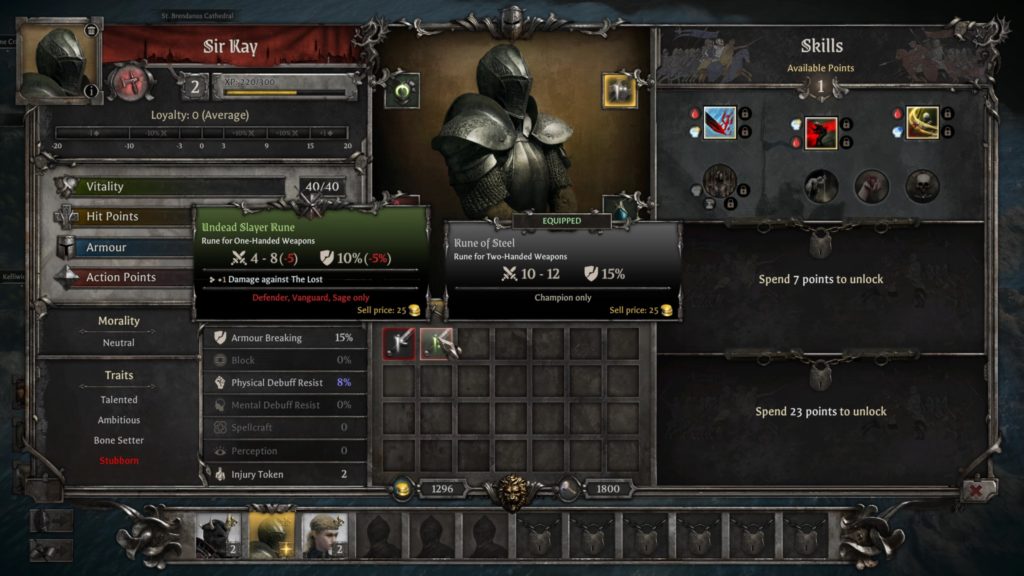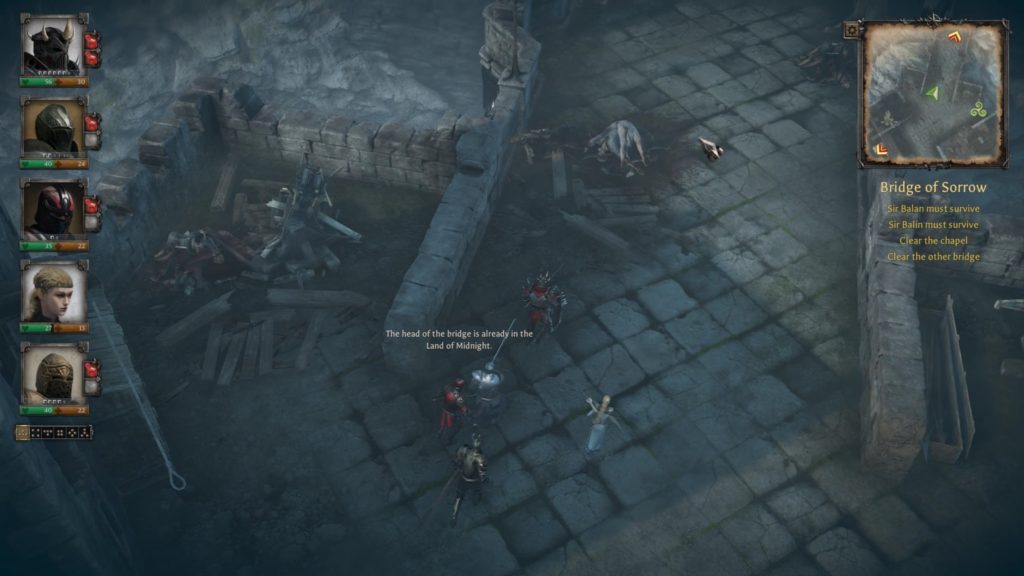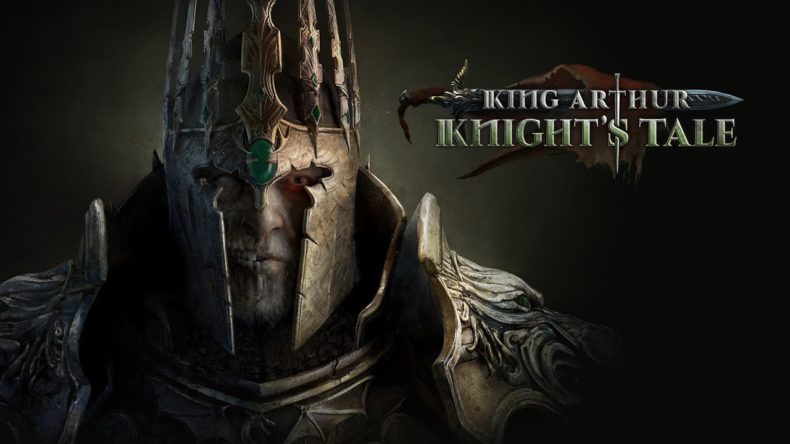Alongside Sherlock Holmes, King Arthur is one of those timeless characters that everyone has a favourite version of. No one much cares about the original stories any more; they’re more concerned with which new spins they can put on the heroes and their worlds. Which is not necessarily a bad thing, of course. In fact, titles like King Arthur: Knight’s Tale manage to create compelling yarns that use our prior knowledge of the characters within against us.
For example, ask anyone and they’ll tell you Arthur was a hero. His knights were noble and proud, and set off on a perilous quest for the Holy Grail. He’s a myth, based on probably dozens of ancient figures about which we know very little indeed. So when Knight’s Tale paints Arthur as a corrupted villain who led Dark Ages Britain to the brink of Hell, it feels immediately new. Instead, Mordred (often depicted as the son of Arthur and Morgana le Fey) is the anti-hero here, brought back to life by the Lady of the Lake and charged to hunt down a resurrected, demonic Arthur.

The land of Avalon is beset by monsters, demons, witches and beasts. The dead refuse to stay dead, and the mighty fortress of Camelot has fallen to ruin. Part of Mordred’s quest will be rebuilding that ancient citadel, and reforging the legendary Round Table. Of course, he’ll also need knights to hold court around it – which is the main drive of the campaign.
Due out in March this year, the build we’ve played only contains the first two acts of King Arthur: Knight’s Tale. The dull, generic title just doesn’t do the game justice. It tells us nothing about the tactical, turn-based RPG that it is; nothing about the fantastical creatures, nor the dark, morally grey warriors fighting to save a dying world.
As newly-resurrected Mordred, you begin the game as a bit of a shit, to put it bluntly. Mordred is a miserable bastard, a failed usurper and former tyrant. The Knights you find and recruit are not much better, generally-speaking, though they’re all in it for the same reason: to save the world from Arthur’s evil. They don’t really like Mordred, either, but this at least lends weight to your moral choices. Sometimes you’ll need to make kingly decisions that will influence a four-point morality meter, and your Knights of the Round Table will respond and react to these choices.

The cast of characters is an interesting and diverse bunch, too, each with their own skills, gear and ability trees to unlock. From dull but noble Sir Kay to the wintry, no-nonsense Lady Dindraine, your steadily growing entourage feels like a Medieval Avengers, assembling to face down the hordes of evil braying at the door.
You select missions from a large map, or answer events that often require simple binary choices. Each action moves your morality between Righteous and Tyrant, Christian and Old Faith. This meter affects which of the 30+ characters become recruitable, and which abilities Mordred can unlock as he progresses. You’ll also rebuild Camelot, installing a market, a cathedral, a training ground and an infirmary.
While you’re free to explore outside of combat, finding chests and shrines and ever-important campfires, combat takes place in locked, grid-like arenas. Think melee XCOM and you’re somewhere close. On the standard difficulty, combat feels balanced and fair. If you cock up or leave a character exposed you’ll be punished for it, but combat takes heavy armour into account and your knights can weather some decent punishment. Unarmoured characters cannot, however, and damage will immediately be applied to their health and vitality. If either is reduced to zero, the character will die and on any difficulty other than the lowest, death is permanent.

Vitality will heal between missions, but if a character’s health is damaged you’ll need to put them in the infirmary to recuperate. This forces you to juggle unused characters into the rotation sometimes – and you will almost certainly lose characters during a playthrough. Difficulty ramps up steadily and is rarely forgiving of mistakes.
Visual upgrades to armour and gear would have been nice, as there’s no customisation to your entourage’s appearance (at least in the preview build). You can apply runes to weapons and armour without actually changing the gear, and upgrades are applied to skills and abilities in between maps.
So far, King Arthur: Knight’s Tale is impressive enough to leave me wanting more. The combat feels impactful and balanced, and the characters are fleshed-out though largely unlikeable. Mordred is a miserable shite, and even the positive dialogue choices make him sound like a surly toddler who smokes twenty cigarettes a day. But the other characters react to this, and there’s a chance the character will undergo a genuine redemption if you play the moral choices correctly.
By halfway through the second act I was feeling steeply challenged. I’d lost Sir Kay due to a mistake on my part, and Dindraine was in the infirmary having barely survived the same fight. The game had me on the back foot, but a few cautious plays later I had at least got my confidence back. It’s that kind of game. And of course, you can always drop the difficulty if you really struggle.
With the recent delay pushing the release date back to March 29, King Arthur: Knight’s Tale will likely see a few more tweaks before the final drop. If they adjust some of the dialogue and improve the load times (right now, they are super long), this is definitely one to watch. I just wish the title did a bit more to catch the eye, because it would be a shame if gamers overlooked this come launch.





